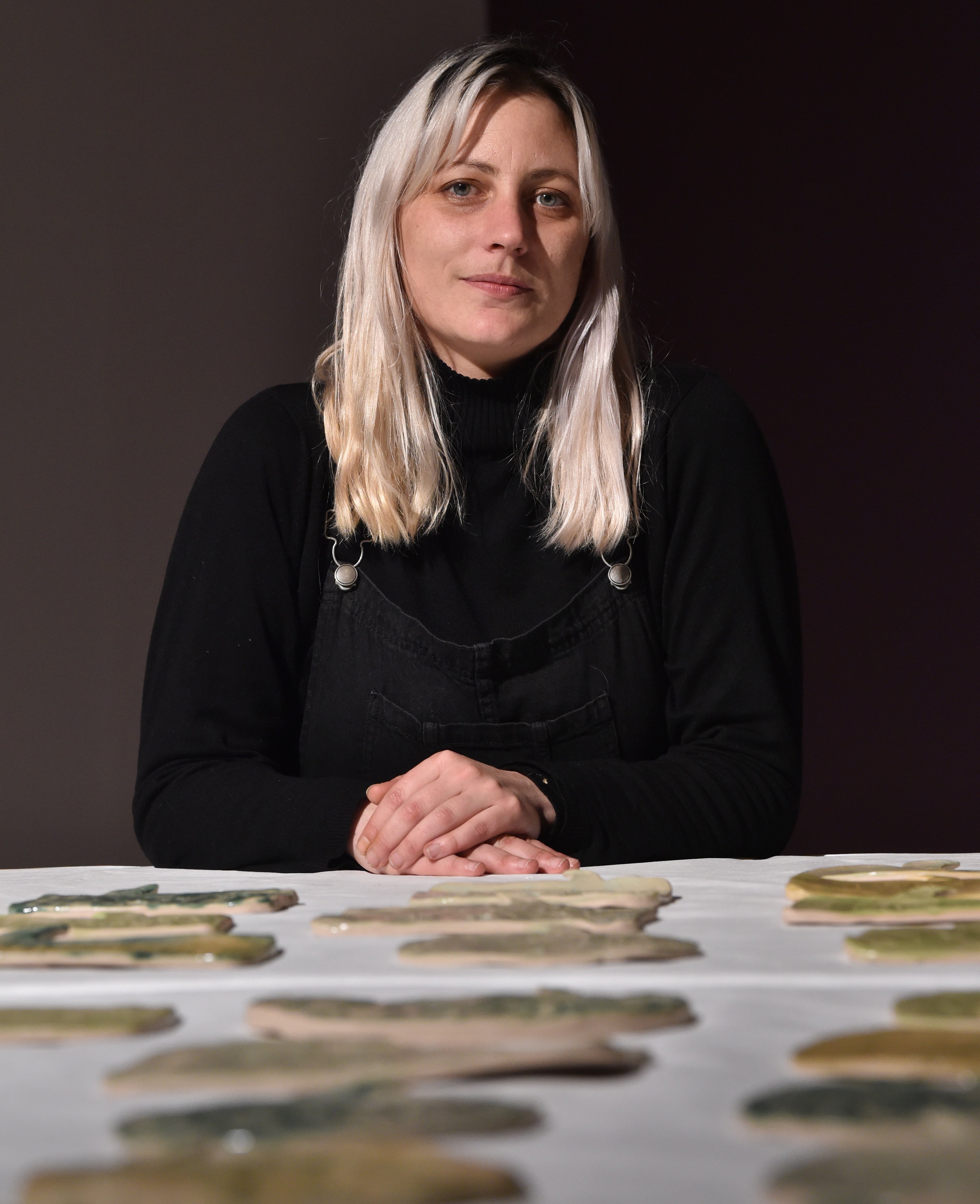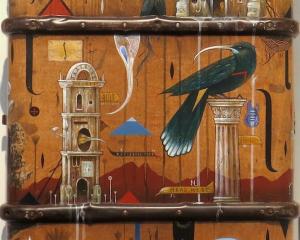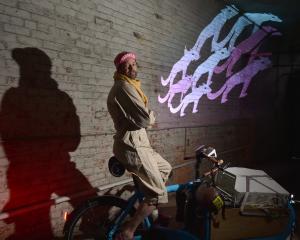
It is turning out to be a massive year for Dunedin-based artist Ayesha Green.
She has been named as one of the inaugural recipients of an Arts Foundation Springboard award and her sculpture Ko te Tuhono has been selected by the Dunedin City Council as a new public artwork in the Octagon. Those accolades came on the back of receiving the National Contemporary Arts Award, Waikato Museum, last year.
She is also about to open her first exhibition at the Dunedin Public Art Gallery, "Wrapped up in Clouds".
"It has been a huge year. If it wasn’t for lockdown, I don’t know how I would have handled it."
Lockdown provided her with the extra time needed to work on the exhibition.
"If anything, it gave me more space to be more thoughtful about the exhibition as a whole. It gave me time to think and reflect. I’m grateful for lockdown giving me that. It was a nice opportunity."
The exhibition looks at how people think, talk about and describe the landscape.
"I’ve always been interested in tourism information regarding New Zealand and thinking through the ‘100% pure’ slogan.
There is a lot of emphasis on landscape, in terms of how we do tourism in New Zealand. And, following on from that, how tourism affects our national identity and how we, as New Zealanders, feel about the landscape and scenic beauty and nature reserves. And how we treat the landscape as its own sort of ecology."
To answer these questions, Green looked at naturalist Joseph Banks’ (1743–1820) records of his first encounters with New Zealand’s flora and fauna.
"I’d been looking at a lot of botany Joseph Banks had done and then some of it came through his diaries from his trips. I’ve read through all of his entries from when he came to New Zealand."
She is interested in the way the landscape is described and how people understand beauty.
"It’s a new phenomenon in a way. Landscape beauty has only been around for a couple of hundred years, but that is the way humans have shifted in their relationship with the land and thinking about natural beauty. It is something we have learnt to do rather than something we have always done."

When Banks came to New Zealand, the idea of a beautiful landscape had not developed.
"I guess, he is looking at ways it can work for a colony. Or he’s looking at things he’s never seen before in terms of plants, so the way he describes the land is really kind on unique in terms of landscape description that we are used to."
Green, who is of Ngai Tahu and Ngati Kahungunu descent, also looked at Maori ecology.
"The relationship we have to the land is usually extremely, like the land is us and we are the land."
By looking at both the settler and Maori ecological view, Green wanted to see how they entwined to create a story about a nation.
For the exhibition, she created taxonomic works focusing on parts of flowers inspired by a book by Audrey Eagle, a botanist in the 1970s.
"I like to use found imagery in my work. I looked at the way she botanises — a lot of it is about the language of botany."
Green has also created ceramic works for this exhibition, speech bubbles with different words on them describing the land or the way people might personify the land such as dancing.
"In essence, I’m trying to think about the tree shivers. Shivering is normally associated with the human body, so I’m looking at the relationship between the human body and the land. There is this crossover describing both of those things."
Another element of the exhibition is a series of post cards that Green has drawn using excerpts from Banks’ HMS Endeavour journal. The work is called Dear Ayesha, Love from Joseph .
"They’re postcards to myself from him."
She created the drawings with earth pigment, kokowai, or red ochre earth sourced from a special site at the marae at Karitane.
Traditionally, the pigment is cooked in a hangi to dry it out and bound together using Karui gum in the north or shark oil in the south, but Green ground it into a dust using a pestle and mortar and bound it with water and acrylic pigment.
"It was easy to use. I’m not so fussy that it has to be thick luscious paint, it was a bit gritty, but I liked the texture. It was sort of watery but it holds itself really well and was really bright with a lot of different hues."
Green’s exhibition is the first instalment of a two-part exhibition programme, "Suite 20/21", which features five artists. The exhibition series is part of the DPAG’s biennial commitment to showcasing contemporary art practice in Dunedin.
Its two-part structure is a response to the challenges that Dunedin’s creative community is facing during the Covid-19 pandemic. Dunedin Public Art Gallery’s team reshaped and expanded the gallery’s biannual contemporary Dunedin exhibition programme to meet the needs of the artists that were involved, supporting them to enable them to exhibit next year.
Part Two of the series is scheduled to open in March with works by Alexandra Kennedy, Octavia Cook, Ed Ritchie and Justin Speirs.
Once the exhibition opens, Green will focus on the public sculpture project, which has been quietly ticking away in the background.
"It has been a nice experience. We’ve been going slow and steady, so we do a good job. It’s been really fun."
While involved every step of the way, her design is being created in aluminium and steel by different companies. The carving is cast aluminium from a 3-D scan from which a mould is created and then the aluminium is cast. Then it is placed on a steel frame and placed on site.
It is turning out to be a massive year for Dunedin-based artist Ayesha Green.












![... we all become all of these things [installation view] (2025), by Megan Brady.](https://www.odt.co.nz/sites/default/files/styles/odt_landscape_small_related_stories/public/story/2025/03/1_we_all_become_all_of_thes.jpg?itok=nicA_yAm)